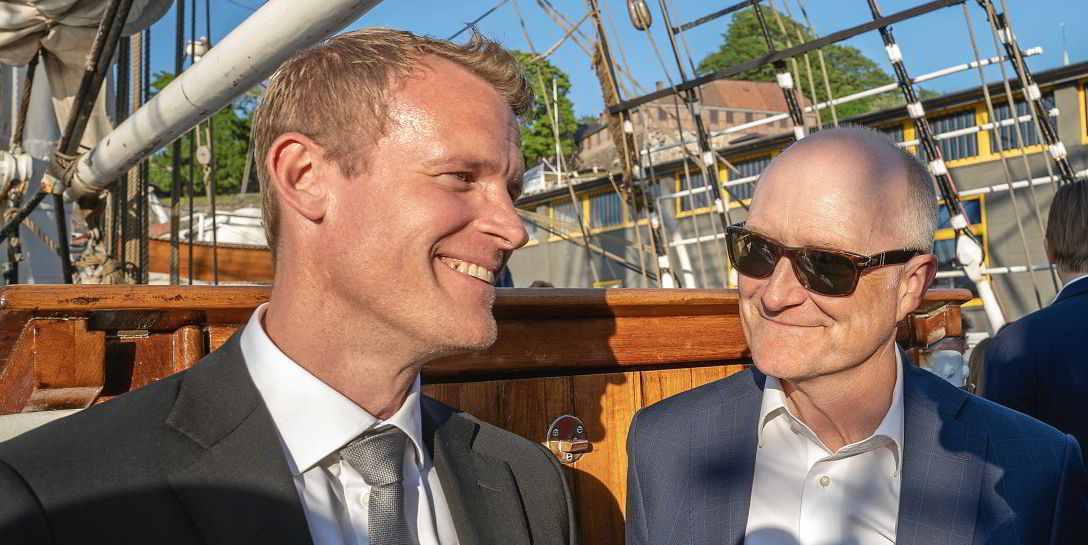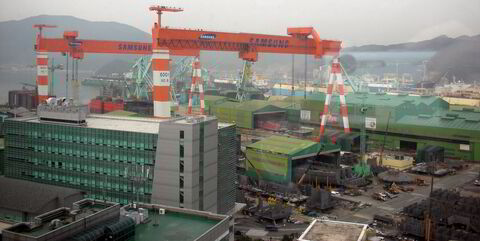Golden Ocean Group interim chief Lars-Christian Svensen knows how to put a deal together.
This has become apparent in interesting transactions that have exploited new pockets of demand, such as logs loaded on board a newcastlemax bulk carrier for the first time last year.
It is also being shown in the company’s ability not only to make money over the market but to generate gains through well-timed deals, which was writ large in Golden Ocean’s third-quarter results on Tuesday.
During the earnings call, analysts seemed impressed that cash flow generation remained flat compared with the previous quarter, during what would have otherwise been a soft period for freight markets.
Svensen said the results followed a pivot in chartering strategy.
“Entering into the quarter, we were quite covered on the panamaxes. We realised quite quickly that we needed to have some more exposure there to capture the market, so we turned over every stone to be able to add on some more spot exposure on the panamax, which has yielded well,” he explained.
It was much the same for the company’s capesizes.
“We had a fairly high confidence for the second half of this year, simply because of the many drivers this year — the coal, the bauxite and also Brazil performing the way it should do,” he explained.
Positive outlook
“For us going into this quarter, it was quite clear that we wanted quite a bit of spot exposure and, luckily, we got this one right.”
Golden Ocean’s commercial flexibility is underpinned by its robust capital structure, Svensen told TradeWinds.
“We do not want high financial and operational gearing at the same time, thus it has and will be important to have a low cash breakeven base, much thanks to solid financing,” he said.
“That way we are able to keep a large part of the fleet tilted toward the spot market when we see pockets of strength, without jeopardising our dividend capacity.”
Golden Ocean has for some years now been vocal about its wish to concentrate on larger bulkers and has just confirmed the sale of its final supramax.
Selling ice-classed vessels is well timed as winter intensifies in the northern hemisphere and the global need for coal remains elevated, particularly in Asia.
Vessel tracking data from Oceanbolt shows that shortly after the Polar Lady (ex-Golden Suek) delivered to its new owner in early September, it called at Ust Luga in Russia and loaded a cargo highly likely to be coal. It then made its way through the Northern Sea Route before discharging in northern China a few weeks later.
Two ice-classed panamaxes sold by Golden Ocean late last year also immediately entered into coal trades between India and Ust Luga, where icy conditions typically begin each year for a few months from late November.
But as an arm’s-length seller, of course, there is nothing Golden Ocean can do about the behaviour of the companies to which it sells vessels.
“Our focus remains on the larger sizes, where we see more earnings potential based on where we are in the cycle,” Svensen told TradeWinds.
“With our current balance sheet, we are also able to make accretive purchases should the right vessels/fleet be there for us to grow our vessel count.”
The company, which is listed in Oslo and on New York’s Nasdaq, sees better investment opportunities in modern vessels of two to four years old, rather than ordering further newbuildings.
Significant gains
In recent months, Golden Ocean has been an active seller, which has generated gains — $800,000 from the 74,800-dwt, ice-classed Golden Suek (renamed Polar Lady, built 2011) and $6m from the sale of the 58,100-dwt Golden Hawk (built 2015), which will be recognised in the final three months of the year.
Reports by brokers that another ice-classed panamax — the 74,800-dwt Golden Bull (built 2012) — was sold in October are wrong, the CEO said.
“The vessel is very much still with Golden Ocean, trading in the spot market,” Svensen told TradeWinds.
Golden Ocean has for some time been active in transporting iron ore from ice-bound ports in Canada and it has no intention of scaling down its ice business, he added.
“Three of our kamsar [newbuildings] will be fully ice-classed. The rationale for recycling our fleet is purely based on age, size, speed/consumption and how certain assets perform in tandem with the rest of the fleet,” he said.
Golden Ocean will take delivery of the four kamsarmaxes it has on order next year, which will be dual-fuel ready — but it has still not decided which alternative fuel to opt for.
Investments in the existing fleet will continue, starting with additional scrubber installations.

The price differential between heavy fuel oil and very low-sulphur fuel oil has widened this year, making the savings in fuels costs generated by scrubber-fitted vessels all the more attractive.
Svensen said Golden Ocean will fit as many of the devices as possible on its younger vessels during the next dry-docking cycle. With $97.5m in cash and equivalents available as of 30 September, it can afford to do so.
Lars-Christian Svensen says it is “difficult not to be positive in the larger dry bulk space”.
“The order book is historically low in dry, especially on the capes,” he told TradeWinds.
“Congestion is low, more so on the cape front, so much of the downside risk we consider has already been priced.
“The volumes shipped this year on coal, iron ore, bauxite and agribulk have been excellent and we believe that healthy cargo flow will continue as we enter 2024.
“That being said, we respect and welcome the volatility, often influenced by macro news in the current environment.”
Daily cash breakeven rate for Golden Ocean’s 95-vessel fleet is $14,800 per day.
During its quarterly conference call with investors, it highlighted that its ability to generate a daily premium of $5,000 over prevailing rates in the market technically reduces its cash breakeven rate to below $10,000 per day.
“A key risk-mitigating strategy for us is to continue to modernise our existing fleet with energy-efficiency devices, reduce our average fleet age and spend time and money in dry dock to make the Golden Ocean fleet more competitive and environmentally friendly,” Svensen told TradeWinds.
“This goes hand in hand with achieving a higher premium in the spot and period market, which has shown an increased bottom line compared to prevailing indices.”




